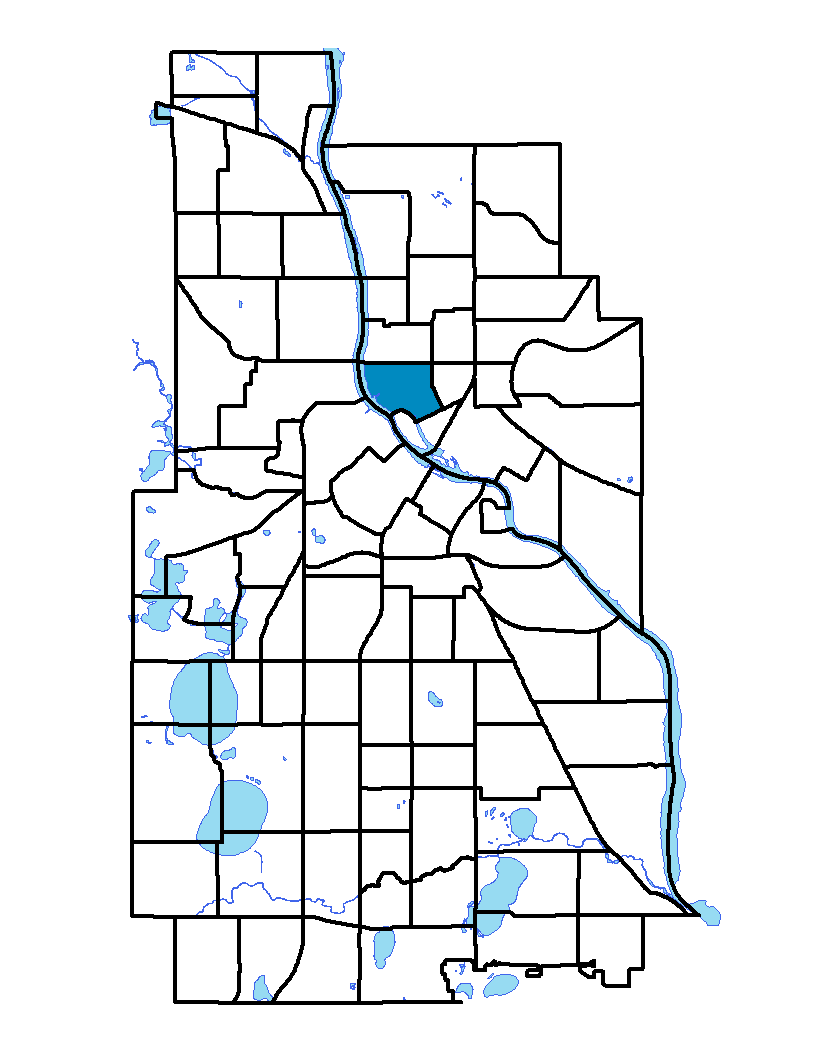St. Anthony West is one of the oldest neighborhoods in Minneapolis as part of northeast Minneapolis. Our historic neighborhood was established in 1849 on the banks of the Mississippi River as the Village of St. Anthony Falls. Later, we were merged with the new city of Minneapolis in the late 1850s. The neighborhood is within walking distance of downtown and the University of Minnesota. St. Anthony West is also host to Boom Island Park, a 14-acre riverside park. St.Anthony West is well known for the lighthouse on the Mississippi River located on Boom Island near the Plymouth Avenue Bridge. It is not a functional lighthouse but a landmark.Today, we are proud and pleased to be a part of the transformation taking place along the river in northeast Minneapolis.
To learn more about the neighborhood association visit: www.stawno.org
Indicator Details
| Indicators | Primary Domain | Indicator Value |
Rank |
Tier |
|---|---|---|---|---|
| Toxic Releases from Facilities | Environmental Hazards | 100.0% | 84 | Bottom |
| Local Business Vitality | Economic Health | 43.4% | 80 | Bottom |
| Proximity to Superfund Sites | Environmental Hazards | 70.7% | 70 | Bottom |
| Employment Rate | Employment Opportunities | 61.9% | 65 | Bottom |
| Motor Vehicle Collisions | Health Systems and Public Safety | 13.9 | 63 | Bottom |
| Tree Cover | Natural Areas | 27.9% | 50 | Middle |
| Public Assisted Households | Employment Opportunities | 22.0% | 48 | Middle |
| Residential Mobility | Social Cohesion | 78.6% | 47 | Middle |
| Excessive Housing Cost Burden | Housing | 29.5% | 46 | Middle |
| Preventable Hospitalizations | Health Systems and Public Safety | 2.8 | 45 | Middle |
| Proximity to Brownfield Sites | Environmental Hazards | 5.2% | 44 | Middle |
| Commute Mode Share | Transportation | 29.4% | 42 | Middle |
| Transit Accessibility | Transportation | 325.5 | 41 | Middle |
| Vacancy Rates | Housing | 6.9% | 39 | Middle |
| Adult Educational Attainment | Educational Opportunities | 93.0% | 32 | Middle |
| Travel Time to Work | Employment Opportunities | 21.7 minutes | 32 | Middle |
| Access to Mainstream Financial Services | Economic Health | 17.7% | 30 | Middle |
| Household Transportation Costs | Transportation | 16.0% | 30 | Middle |
| Walkability | Neighborhood Characteristics | 70 | 25 | Top |
| Access to Parks and Open Space | Natural Areas | 11.6% | 25 | Top |
| Voter Participation | Social Cohesion | 34.7% | 24 | Top |
| Long-Term Unemployment | Employment Opportunities | 4.3% | 22 | Top |
| Violent Crime | Health Systems and Public Safety | 33.4 | 21 | Top |
| Age of Housing | Housing | 68.7% | 16 | Top |
| Pedestrian Connectivity | Transportation | 176.3 | 16 | Top |
| Preschool Enrollment | Educational Opportunities | 68.9% | 16 | Top |
| Business Retention | Economic Health | 6.2% | 10 | Top |
| Blood Lead Levels in Children | Housing | 1.2% | 9 | Top |
| Low Birth Weight | Health Systems and Public Safety | 2.9% | 8 | Top |
| Offsite Alcohol Outlets | Neighborhood Characteristics | 1 | 6 | Top |
| Residential Proximity to Traffic | Environmental Hazards | 0.0% | 1 | Top |
| Reading Proficiency | Educational Opportunities | -% | - | Data N/A |
| School Proximity to Traffic | Environmental Hazards | -% | - | Data N/A |
| Chronic School Absence | Health Systems and Public Safety | -% | - | Data N/A |
| High School Graduation Rate | Educational Opportunities | -% | - | Data N/A |
| School Readiness Scores | Educational Opportunities | -% | - | Data N/A |
| Food Desert | Neighborhood Characteristics | -% | - | Data N/A |

